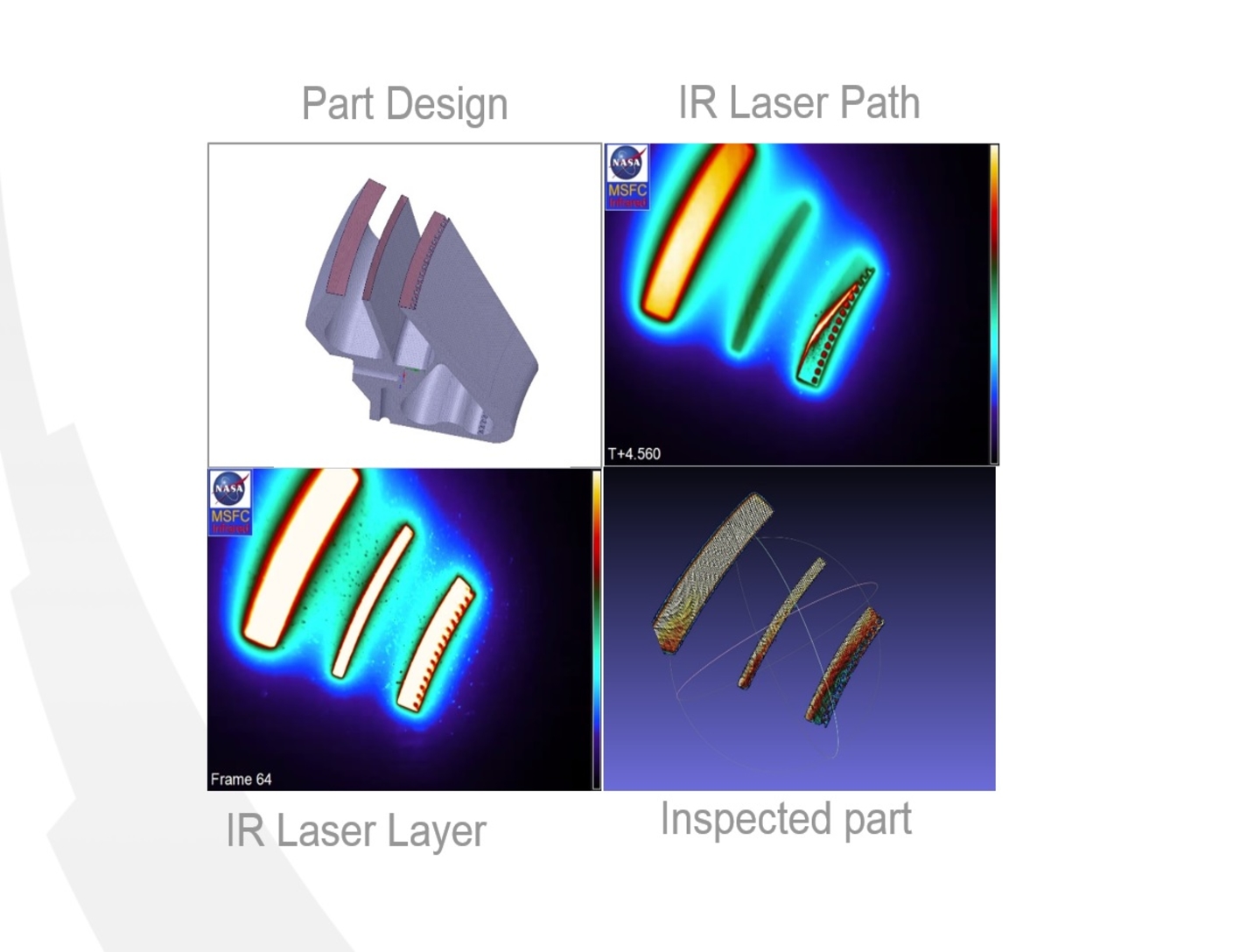
Researchers at NASA Marshall Space Flight Center have developed a method for interim, in situ dimensional inspection of additively manufactured (AM) parts. Additive manufacturing processes currently have limited monitoring capabilities, offering users little to no options in mitigating the high levels of product and process failures, according to NASA.
The new technology uses infrared (IR) and visual cameras that allow users to monitor the build in real-time and correct the process as needed to reduce the time and material wasted in parts that will not meet quality specifications. The technology is useful for the in-process inspection of a parts internal features (e.g., fluid channels and passages), which cannot be easily inspected once the print is complete. The technology could enable the implementation of a closed-loop feedback system, allowing systems for automatic real-time corrections. The NASA method can also be used to determine geometric differences (flaws) between the designed model and the printed part/component.
Using prototypes in both laser-sintered plastic and metal processes, the technology detected errors due to stray powder sparking and material layer lifts. It could also detect anomalies in the property profile that are caused by errors due to stress, power density issues, incomplete melting, voids, incomplete fill, and layer lift-up. Three-dimensional models of the printed parts were reconstructed using only the collected data.
This story uses material from NASA,with editorial changes made by Materials Today. The views expressed in this article do not necessarily represent those of Elsevier.



